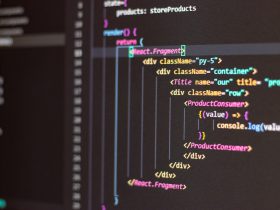In recent years, Artificial Intelligence (AI) has emerged as one of the most transformative technologies across various industries. From healthcare to finance, AI has revolutionized the way businesses operate and has the potential to shape the future of our society. At the heart of this AI revolution lies a powerful technology called machine learning.
Machine learning refers to the process by which computers can learn and improve from experience without being explicitly programmed. It is a subset of AI that focuses on the development of algorithms that allow computers to learn and make predictions or decisions based on available data. Unlike traditional programming, where rules are explicitly defined by humans, machine learning algorithms are designed to automatically learn patterns and rules from data and adjust their behavior accordingly.
The significance of machine learning lies in its ability to process vast amounts of data and extract meaningful insights. With the exponential growth of data in the digital age, traditional analytical methods often fall short in extracting actionable information from these massive datasets. Machine learning algorithms, on the other hand, excel in analyzing large volumes of data quickly and accurately. This allows businesses and researchers to gain deeper insights and make more informed decisions based on data-driven predictions.
One of the key applications of machine learning is in natural language processing (NLP), which enables computers to understand, interpret, and generate human language. NLP has transformed how we interact with technology, with virtual assistants, chatbots, and voice recognition becoming an integral part of our daily lives. Machine learning algorithms can analyze vast amounts of text data to understand context, sentiment, and intent, enhancing the accuracy and efficiency of these language-based applications.
Another area where machine learning has made significant advancements is in computer vision. Computer vision algorithms can analyze and interpret visual data, enabling machines to understand and make sense of images and videos. Industries like healthcare, autonomous vehicles, and security have benefited greatly from machine learning-based computer vision applications. For example, machine learning algorithms can analyze medical images to detect early signs of diseases like cancer or assist self-driving cars in identifying and understanding the surrounding environment.
While machine learning has already made remarkable strides in various fields, its potential is far from being fully tapped. As more data becomes available, the algorithms will become even more accurate and efficient. This has implications for personalized medicine, where machine learning can capture individual health data to provide tailored treatments and predictions. In addition, the integration of machine learning with other emerging technologies, such as Internet of Things (IoT) and big data analytics, will further enhance its capabilities.
However, it’s essential to acknowledge the challenges and ethical considerations associated with the use of machine learning. The quality and reliability of the data being fed into these algorithms play a crucial role in determining their effectiveness. Biased or incomplete data can result in skewed predictions, making it essential to carefully curate and validate datasets. Additionally, concerns about privacy and data security must be addressed to ensure that sensitive information remains protected.
In conclusion, machine learning is the driving force behind the advancements in artificial intelligence. It empowers computers to learn, adapt, and make predictions based on available data, fueling innovations and breakthroughs across diverse industries. As machine learning continues to evolve, it holds tremendous potential to transform the way we live and work, making AI an integral part of our future society. However, as with any powerful technology, it is crucial to approach its development and implementation with an ethical and responsible mindset.


















Leave a Reply